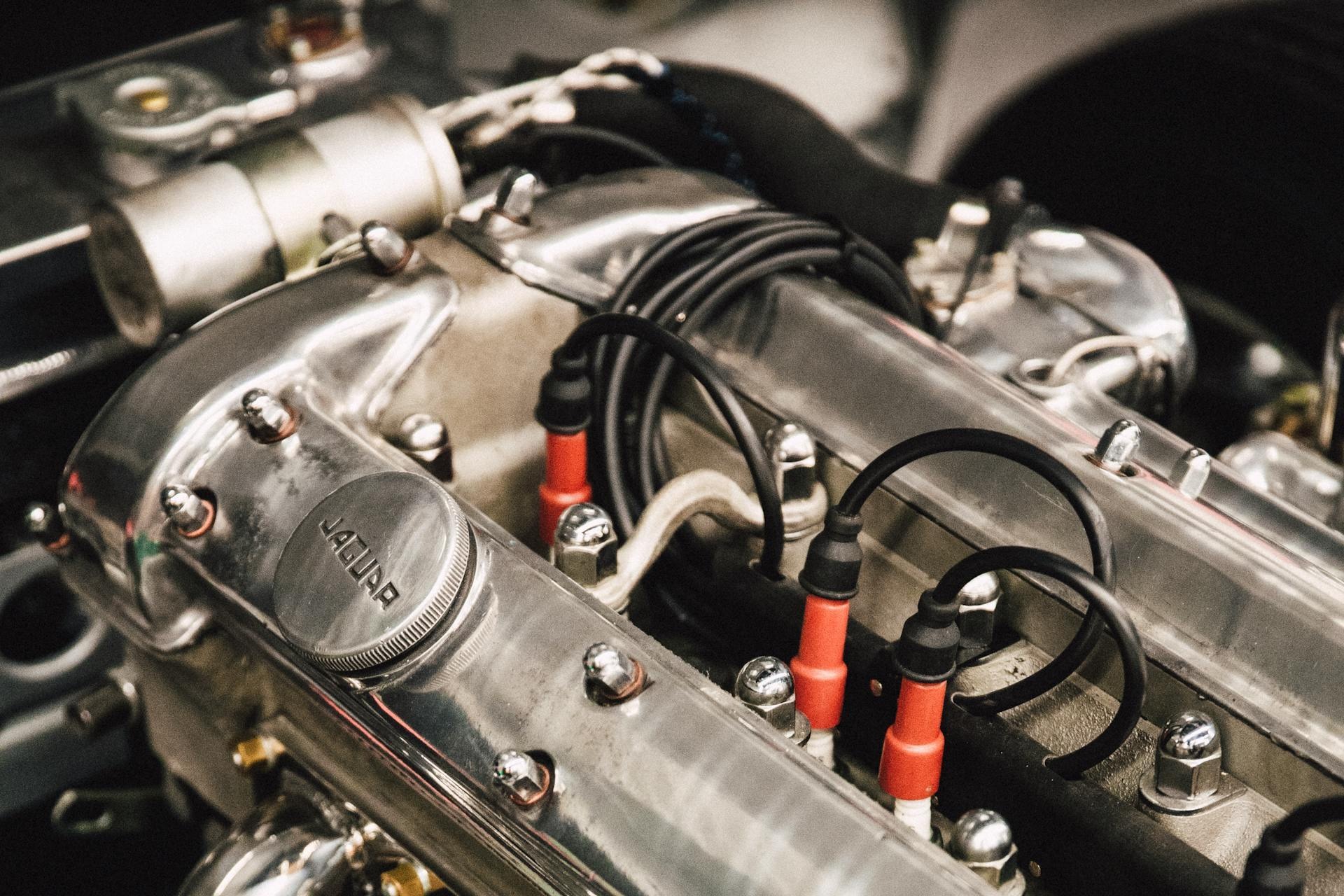
As an Amazon Associate, Modded gets commissions for purchases made through links in this post.
Imagine the engine’s roar, the smell of burning rubber and the adrenaline coursing through your veins as you navigate tight corners and open straightaways. Knowing how to race in a manual isn’t just about speed — it’s a symphony of skill, timing and unparalleled clutch control.
Mastering it is necessary for anyone serious about conquering the racetrack. Speed and horsepower often overshadow this aspect. However, any seasoned racer will tell you mastery of this subtle skill separates the weekend warriors from the track legends.
Basics of Clutch Control
It is a mainstay in manual racing, serving as the critical bridge between the engine’s power and your car’s wheels through the gearbox. It’s more than connecting and disconnecting the gears — it’s about doing so in a way that maximizes your vehicle’s performance.
By mastering clutch control, you can reduce depreciation on your engine, extending its life span. More importantly, precise clutch work allows for smoother, faster gear transitions, which can be the deciding factor in a race’s most intense moments.
The result? Optimal acceleration, better fuel efficiency and the ability to maintain high speed even through turns. In short, clutch control is essential for anyone looking to get the best out of their manual car on the race track.
Critical Techniques for Mastering Clutch Control
Now that you understand the fundamental elements of the clutch system, it’s time to level up your skills. Excelling in clutch control is about honing specific techniques to make each gear shift smooth, each corner easy to navigate and each start off the line impeccable.
Footwork
Using your foot on the clutch pedal is crucial for precise gear shifting and smooth acceleration. Every car’s clutch system varies. It’s about feeling the “bite point” where the clutch plate engages with the flywheel. Your footwork must be as smooth as a dancer’s to hit this sweet spot consistently.
Tips to improve your footwork include the following:
- Use the ball of your foot: Do not use the whole foot for better control over the pedals’s movement.
- Practice “riding the clutch”: You can do this to feel the bite point without fully engaging the gear. It helps you become more familiar with your car’s specific clutch system.
- Maintain steady pressure: Avoid jerky movements or engine strain when releasing the clutch pedal, especially in higher gears.
By refining your footwork, you’re taking a big step in mastering clutch control, making you more proficient and competitive on the racetrack.
Timing
Timing is another fundamental element to learn how to race in a manual. When you engage or disengage the clutch, it can make or break your performance on the track. Perfect timing ensures smooth gear transitions, better speed retention and less stress on the engine.
You can work on your timing with these tips:
- Sync with engine RPMs: Keep an eye on your tachometer and learn to sync your clutch action with the engine’s RPM for smoother gear transitions.
- Use audio cues: Listen to the engine’s sound as an additional cue for when to shift. With experience, you’ll know precisely when your car is “asking” for a gear change.
- Practice makes perfect: Spend time on a practice track or an empty lot working on your timing. The more you practice, the more intuitive your clutch control will become
By improving your timing, you’ll enhance your racing performance and extend the longevity of your car’s clutch system.
Feathering
It is a technique where you partially engage the clutch by lightly pressing on the clutch pedal. It allows for more controlled acceleration and deceleration, especially during complex maneuvers like navigating tight corners or starting on an incline. Mastering this approach is consequential for achieving smoother, more precise control over your vehicle.
Keep these tips in mind when feathering:
- Find the bite point: Knowing your car’s bite point is vital to effective feathering. Practice finding this sweet spot so you can engage the clutch partially when needed.
- Gentle movements: Feathering is all about finesse. Use gentle, subtle foot movements to engage or disengage the clutch partially.
- Know when to feather: Use this technique in situations that require delicate control, like starting uphill or navigating sharp bends on the track.
By mastering the art of feathering, you’ll add another layer of skill to your racing capabilities, giving you the edge in races that demand utmost precision.
Common Mistakes to Avoid
One common oversight when learning how to race in a manual is riding the clutch. It is where your foot remains on it even when not shifting. Make it a habit to remove your foot from the pedal unless you’re actively engaging or disengaging it. It prevents unnecessary wear and prolongs the life of your clutch system.
Another issue is dumping the clutch by releasing the pedal too abruptly. It can cause the car to jerk forward or even stall. To avoid this, practice smoother, more controlled releases. It will help you find the ideal balance between engaging and disengaging the clutch, making for a smoother ride and less strain on the engine.
Some drivers also overlook the importance of the clutch’s bite point, which is crucial for efficient shifting. Take the time to get familiar with your car’s specific bite point. Knowing this will make your gear shifts more effective and your overall clutch control more precise.
Over-revving is also among the most common blunders of race drivers. It occurs when you press the gas pedal too hard while the clutch disengages, causing unnecessary wear. To beat this, be mindful of your RPMs and aim to apply a gentle amount of throttle as you release the clutch, especially during gear changes.
Lastly, motorists must avoid skipping gears. While it may seem faster, it is not advisable as it can strain your clutch and engine. Stick to the proper gear sequence, especially when racing or driving in high-stress conditions.
Pre-Race Checklist for Clutch Control
Before you unleash your racing skills on the track, ensuring your clutch control is at its peak performance level is crucial. Racing isn’t just about having the proper technique — it’s also about thorough preparation and practice.
- Inspect the clutch system: Before anything else, ensure all components are in good condition. A worn-out clutch plate or pressure plate can hinder performance.
- Practice finding the bite point: Spend some time in a stationary position, pressing and releasing the clutch to find the exact spot for smoother starts and shifts.
- Footwork drills: Practice your foot movements on the clutch pedal, focusing on using the ball of your foot for better control.
- Time your shifts: Take a few practice laps to work on your timing. Sync your clutch engagements with the RPMs to ensure smooth transitions between gears.
- Test feathering: Use various techniques during practice to manage your speed and control, especially around corners and inclines.
- Check RPMs: Keep an eye on the tachometer while practicing. Ensure you’re not over-revving, as this can wear out the clutch faster.
- Simulate race conditions: Practice clutch control under conditions similar to what you’ll face on the track. It includes rapid shifts, high-speed corners and quick starts.
- Final system check: Before hitting the trail, review the clutch system to ensure everything functions correctly.
Why Clutch Control Matters
Knowing how to race in a manual is an art form that can dramatically elevate your performance. The benefits are many, from smoother gear shifts to optimized speed retention and reduced engine wear. But the most gratifying use is the sense of leadership and confidence it gives you behind the wheel.
So don’t hold back. Make the time to practice, refine your technique and learn from your mistakes. The racetrack is your canvas, and clutch control is one of your most valuable tools.
Stay up to date with the latest by subscribing to Modded Minute.
Author
Jack Shaw is a senior writer at Modded. Jack is an avid enthusiast for keeping up with personal health and enjoying nature. He has over five years of experience writing in the men's lifestyle niche, and has written extensively on topics of fitness, exploring the outdoors and men's interests. His writings have been featured in SportsEd TV, Love Inc., and Offroad Xtreme among many more publications.





